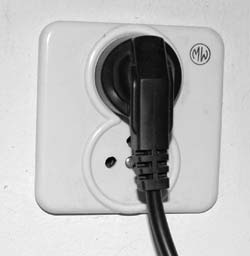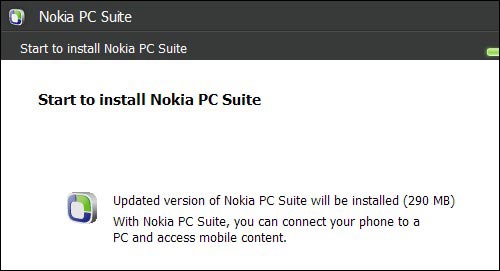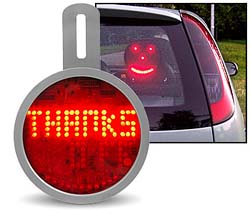 As someone who spent a large chunk of lifetime working on improving knowledge worker effectiveness, especially around computer mediated communication and collaboration, I can barely contain my excitement. I’ve just sat through the lengthy video of yesterday’s unveiling of Google Wave in the I/O developer conference. Not only have the good folks at Google integrated the most central processes of Computer Supported Collaborative Work – Email, IM, Shared document editing, Discussion boards, and more – into a single tool; but they’ve upgraded their underlying paradigms – which had changed very little in decades – into a dynamic, vibrant usage model that takes advantage of the latest Web 2.0 concepts (and then some).
As someone who spent a large chunk of lifetime working on improving knowledge worker effectiveness, especially around computer mediated communication and collaboration, I can barely contain my excitement. I’ve just sat through the lengthy video of yesterday’s unveiling of Google Wave in the I/O developer conference. Not only have the good folks at Google integrated the most central processes of Computer Supported Collaborative Work – Email, IM, Shared document editing, Discussion boards, and more – into a single tool; but they’ve upgraded their underlying paradigms – which had changed very little in decades – into a dynamic, vibrant usage model that takes advantage of the latest Web 2.0 concepts (and then some).
.
The video is quite long, as was the demo, but well worth your time to watch. I won’t repeat the details; if you don’t have patience for the video, there are screenshots here and some info here. They include concepts we’ve been waiting to improve on for years (like properly dealing with, and visualizing, discussion threads) and others I haven’t seen yet (like an intelligent, meaning-sensitive spell checker).
What will be very interesting to behold when this product comes out later this year is how different segments of the user base adapt to the new paradigm. The Social Networking set should be ecstatic, but what will large enterprises do? The new features of Wave could revolutionize their collaboration effectiveness, so they stand to gain the most, but many large organizations are not known for their agility where new technology (or changes in ingrained cultural paradigms) are involved. Those who do adopt and unleash this power will have a serious competitive advantage, IMHO.
Kudos to the Google team that developed this down under!
 And guess what? It looks like it’s gonna be a good move in many ways. The “what can you possibly say in 140 characters” objection I’ve already taken care of when I became active on Facebook; The tools available, for the PC and for my mobile device, look excellent; many of my friends are already up there; and the interlinking of tweets, blog posts, facebook updates and even full length articles on my web site looks natural and promising.
And guess what? It looks like it’s gonna be a good move in many ways. The “what can you possibly say in 140 characters” objection I’ve already taken care of when I became active on Facebook; The tools available, for the PC and for my mobile device, look excellent; many of my friends are already up there; and the interlinking of tweets, blog posts, facebook updates and even full length articles on my web site looks natural and promising.
 Well, it would have been, if the designer had been thinking. You can see the problem in the next photo: most grounded mains plugs have the cable coming out the side – and this means the second socket in this panel is obstructed by this cable. All it would take to fix this is to build the panel the other way around, with the ground connections on the outside rather than facing the center, or better yet, place the two plugs side by side with the cables going down towards the floor. Cost and complexity of production would have been identical; usefulness would have doubled.
Well, it would have been, if the designer had been thinking. You can see the problem in the next photo: most grounded mains plugs have the cable coming out the side – and this means the second socket in this panel is obstructed by this cable. All it would take to fix this is to build the panel the other way around, with the ground connections on the outside rather than facing the center, or better yet, place the two plugs side by side with the cables going down towards the floor. Cost and complexity of production would have been identical; usefulness would have doubled.
 So, I kept accumulating old hard drives from long gone computers… intending one day to take a power drill to their pesky screws, but never getting around to it… until one day I got fed up and solved the problem once and for all.
So, I kept accumulating old hard drives from long gone computers… intending one day to take a power drill to their pesky screws, but never getting around to it… until one day I got fed up and solved the problem once and for all.

 New on my Possibly Interesting site: a weird superhero comic spoof that I drew when I was studying Mathematics in College. It follows closely the style of 60’s Superman comics, but it takes place entirely in the domain of geometrical figures (and no, at that time I hadn’t yet read Abbott’s Flatland). Lost for years, it had surfaced in a drawer of old stuff, and I figured I might as well share it: if you, too, were a comics fan, and a geek to boot, you may enjoy this.
New on my Possibly Interesting site: a weird superhero comic spoof that I drew when I was studying Mathematics in College. It follows closely the style of 60’s Superman comics, but it takes place entirely in the domain of geometrical figures (and no, at that time I hadn’t yet read Abbott’s Flatland). Lost for years, it had surfaced in a drawer of old stuff, and I figured I might as well share it: if you, too, were a comics fan, and a geek to boot, you may enjoy this.
 This would be easy to do at the factory, but when I checked it out today I discovered that it exists as a retrofit: the charmingly named web company iwoot.com (the name stands for I Want One Of Those) sells a “
This would be easy to do at the factory, but when I checked it out today I discovered that it exists as a retrofit: the charmingly named web company iwoot.com (the name stands for I Want One Of Those) sells a “
